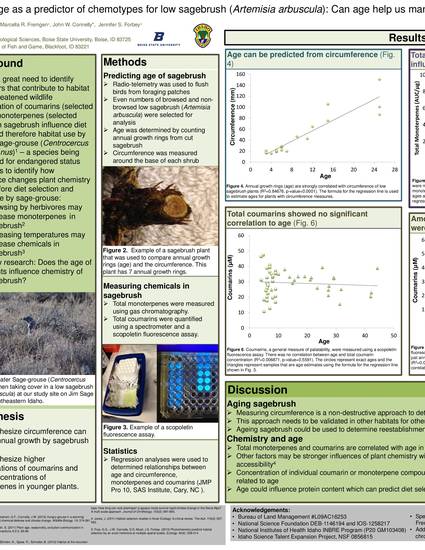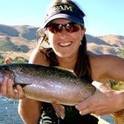
Jennifer Sorenson Forbey
The defensive chemistry of plants limit intake by herbivores. In addition, the spatial and temporal variation of plant chemicals constrains habitat use by herbivores. As such, management of herbivores requires that we properly conserve and manage for the most palatable chemical profiles of plants, or chemotypes. However, management of palatable plants requires that we first identify parameters that influence chemotypes. We hypothesized that the age of a plant is one parameter that influences chemotypes and could be managed. To test this hypothesis, we counted the annual ring growth to determine age and used gas chromatography to determine chemotypes of small (tall) and medium (15cm-30cm tall) low sagebrush (Artemisia arbuscula). We focused on low sagebrush as it is a preferred food source for greater sage-grouse (Centrocercus urophasianus) at our study site. In addition, we tested whether the circumference at the base of the plant is correlated with annual ring growth. Correlating age and circumference may yield a simple, nonintrusive method to estimate the age of sagebrush in the field without counting annual rings. Understanding how age influences palatability of plants is an important factor in assessing and managing grouse habitat. Using a parameter like age, which may be simple to assess in field, to manage sage-steppe habitats could save time and money. We expect if the younger plants are more palatable, reseeding and replanting could be effective methods to make restored habitats more ideal for foraging grouse. Alternatively, if older plants are more palatable the consequences of mowing and herbicide could dramatically outweigh any potential benefits.
Available at: http://works.bepress.com/jennifer_forbey/51/
